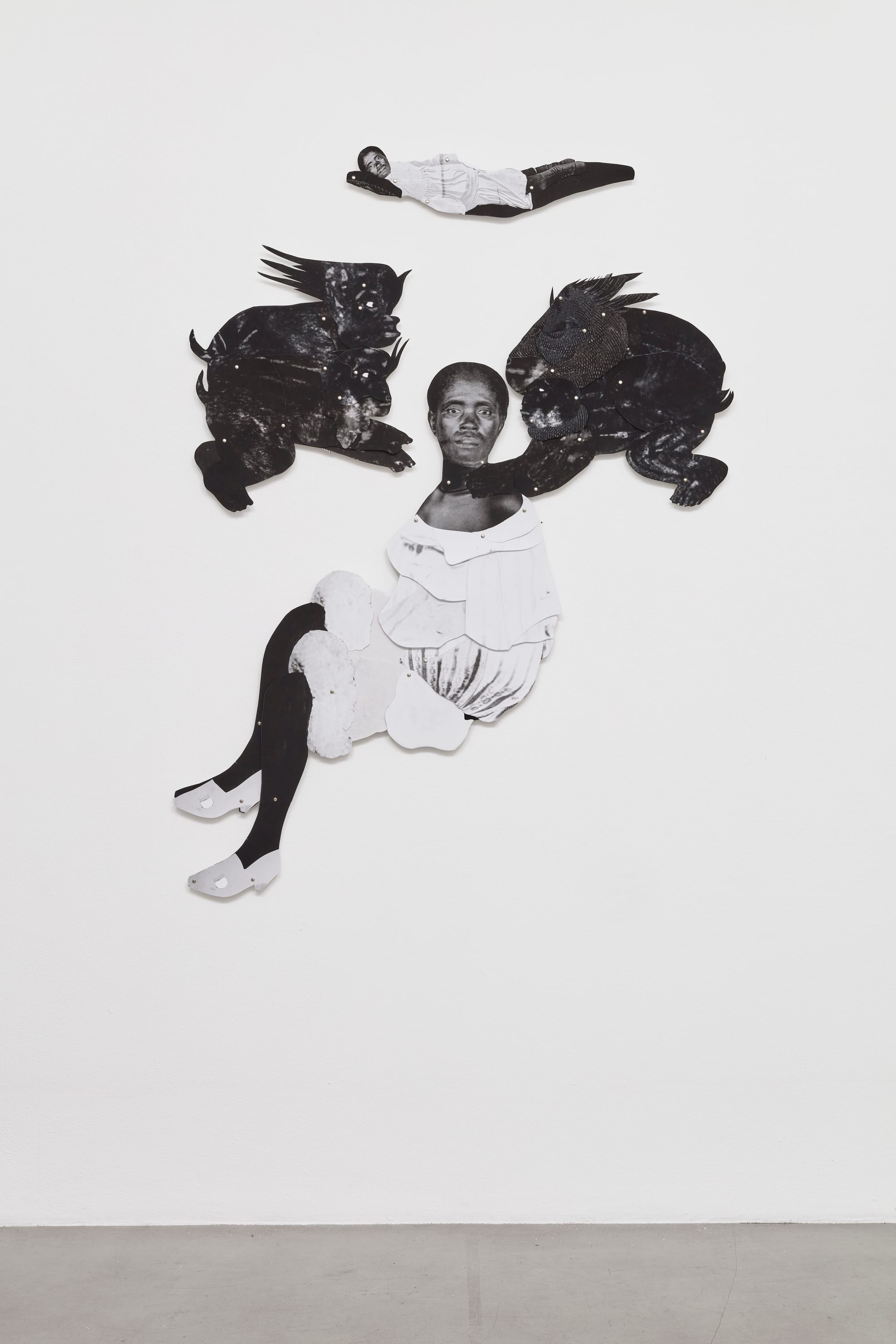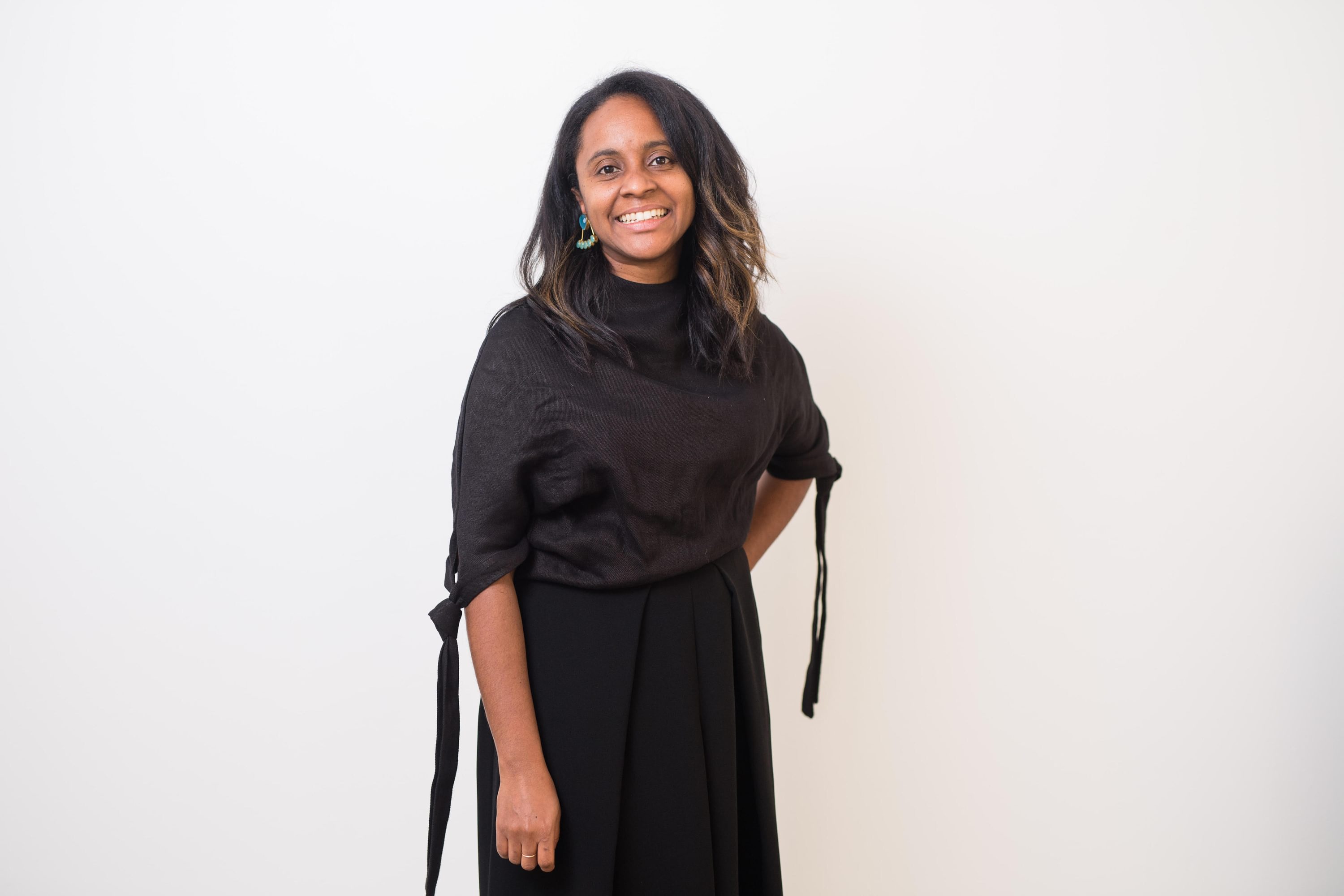
Frida Orupabo, Untitled, 2019, collage with paper pins mounted on aluminium, 155 x 133 cm. Photo by Carl Henrik Tillberg.
Courtesy the artist and Galerie Nordenhak
Utterly Improbable, Yet Extraordinary. This not only describes our present moment but figures as the partial title of Arthur Jafa’s 2017 exhibition A Series of Utterly Improbable, Yet Extraordinary Renditions at Serpentine Gallery in London, where I first saw your work. First of all, how are you feeling? Are there any works of art (be they songs, texts, poems, or films) you’re willing to share that have gotten you through this profoundly destabilising time?
I’m not sure how I feel... I guess it’s a mix of complete tiredness, helplessness, sadness, and anger—a whole lot of anger. It has been some intense weeks... Witnessing black people getting murdered, brutalized, harassed... Again and again, with no consequences... It just shows us what we already know—that within a white, racist system, black lives don’t matter. My medicine varies but I have re-read and listened to Grada Kilomba’s teachings. In my eyes, she is brilliant—she makes complex matters simple and clear. She gives guidance. Ayi Kwei Armah’s words on awakening are profound and something I carry with me always. He talks about the importance of sleep after an accident—that if you are totally conscious when the accident happens, you will not survive. Sleep is therefore needed. But at one point we must awaken again—regain knowledge of ourselves and begin a healing process. Marcel Camus’ 1959 film Black Orpheus brings happiness. I’ve seen it so many times I’ve lost count. It should be seen to sunshine, in bed, though it also happens that I just have it playing in the background while doing other things. It never fails to bring joy… relief.
You work in fragmented black and white images, which you painstakingly reassemble into new wholes, be it digital or paper. The latter often have joints of attaches parisiennes. (Is there a Norwegian word for those fixtures? The English words (file spike/pronged paper fastener) always seem clumsy and lacking to me). I wondered whether you distinguish between the physical manifestation of your work and its digital form?
I usually call them pins, though I am not sure if this is accurate either. Concerning the digital and physical works, I do distinguish between them; probably more now than I did in the beginning. The first physical collage I made was for Arthur’s solo exhibition at Serpentine. Until then I had looked at the digital collages as done — finito. Now, I view them more as sketches. With their physicality, they come alive, and they become more challenging and confronting to the spectator because of the size and the feeling of three-dimensionality. Working with physical material also allows for more improvisation. I often have to switch out body parts (heads, arms, legs) because of low resolution, and I might take things out and/or add on as I move along.
Many artists I know are unable to work in the present circumstances and are not producing new work. Are you processing material differently at the present moment? Are you still turning ideas into images or working in other ways?
Creating has at times gotten more intense, while other days it has been nonexisting. As much as I can, I try not to force things. I have been resting a lot more than usual, moving at a slow speed. Not everyone can afford or is able to rest or take some days off. I am very lucky to be able to do so. Both rest and creativity/work help me to process and restore all the things I take in daily. It’s a way of communicating, whenever I feel the need to. It helps me to organise thoughts—things seen and experienced. Also, simply the act of cutting in paper, adding, subtracting, and putting together feels meditative and calming.
I’m interested in the contemporary art platform Looking Glass Collective as an outlet for collating individual African-European artists’ experiences and aesthetics. How did you become involved? How do you work together?
Looking Glass Collective invited me to do an interview in 2017, and this has been my only involvement with the platform. But I think they do great and important work in highlighting and creating a visual space for African-European artists.
Your work, for me, is ultimately a reminder of the defiant beauty, “power,” and resilience to be found in Black Life, irrespective of the violent circumstances we face.
I am happy you feel that way. In the last couple of years, I have been thinking a great deal about Kathleen Collins' words in relation to my own work, which stresses the importance of not constructing narratives and identities based on dichotomies—good/ bad, saint/sinner. As she says, “neither one has anything to do with reality. Both are traps to dehumanise you.” We know this. All we have to do is to look into ourselves and our own lives, filled with paradoxes and complexities. I believe this is a prerequisite for change.

Dr. Zoé Whitley is Director of London’s Chisenhale Gallery, prior to which she was Senior Curator at the Hayward Gallery in London and Curator of International Art at Tate Modern. Exhibitions to her credit include curating the 2019 British Pavilion at the Venice Biennale and co-curating the acclaimed Soul of a Nation: Art in the Age of Black Power (Tate Modern, 2017).
Photo by James Gifford-Mead



